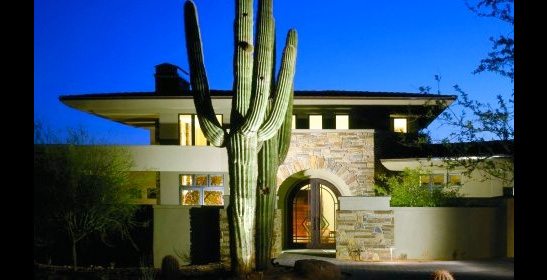The luxury home market in the US is evolving. Several new trends are developing to meet the new demands of an increasingly modern and technologically oriented family. While several mainstays remain true, other commonplace features and traditions are being replaced. What home buyers once valued as paramount, they now see as unnecessary or even inconvenient. And what was once only dreamed of is now becoming fundamental and expected.
The advancing world of luxury homes offers something for every member of the family. Even pets are exquisitely provided for, for example – with outdoor areas carpeted by Astroturf and covered with lattice work (to protect Fido from becoming lunch for a passing hawk). Indeed, the home is a reflection of the family, and today’s trends show that American families value intimacy over exaggerated space. They prefer connectedness over compartmentalized living. Efficiency is quickly becoming more attractive than extravagance. In many ways, luxury living is all about bringing the family together and suiting each individual need in ways that connect the entire estate in harmony and convenience.
Extravagant Functionality

Extravagance was once considered the opposite of functionality. Luxury homes were intended to showcase wealth, provide ultimate convenience and comfort, and indulge fantastic appetites. But according to Jessica Hutchison- Rough, a partner architect with Urban Design Associates, luxury home design in the US is now trending towards functionality and efficiency in ways that emphasize practicality, connection, and even intimacy.
Functionality isn’t the dirty word it once was in the luxury market. While it may have once held connotations of cramped space and austere aesthetics, it is now viewed as a valuable commodity among well-to-do Americans. Extravagance for the sake of extravagance doesn’t make much sense in our practical mindset now. Instead, home design that achieves the most usefulness is the ultimate form of extravagance.
According to Jessica, who has designed some of the most luxurious of homes in the southwest United States, the average luxury home in demand today is around 5,000 square feet. Contrast this with the 10,000 and 20,000 square feet so common in the luxury market in previous years. Large in-home gyms are out. Instead, many find it preferable to go to the gym and connect with friends and occasionally hit the stationary bike at home in a smaller workout area connected to the master bathroom. Cozy coffee bars equipped to make everyone’s favorite java drinks have replaced the oft-neglected wet bars. And private home theaters with rows of chairs lined up in front of a screen? Who wants to be quarantined in a formal little room just to watch a movie? Families these days enjoy their entertainment in the great room on Friday nights or on the screen in the kitchen on Tuesdays while they make pizza together in the brick oven.
Luxuriously Connected
Luxury is becoming more and more about sharing and connection. Open floor plans rule luxury home design currently, and the trend seems to have staying power. Rather than a formal dining room with double doors, a living room to one side, and a kitchen walled off from everyone, a common space is now all the rage. Each space is distinguished with varying ceiling heights, unique dimensional textures, and architectural nuances that express the essence of each area and function. It’s all connected and one. And the demand for this luxurious efficiency keeps quality standards high, resulting in homes that retain price tags well over a million dollars.
Homes in the luxury market are extravagant because they work well for each unique need and taste. No two homes are the same. After all, variety is the spice of luxury life. Yet they tend to follow similar principles. Barriers are removed, and outdoor living is just as much a part of the home experience as a dining room table. For example, some homes feature collapsible window walls allowing the barrier between the indoor and outdoor great rooms to literally disappear into the wall. Windows are now larger and fully functional to bring in all that fresh air and not just the beautiful sunlight. Even guest bungalows, or casitas as they’re called in the southwest, are no longer detached from the main house. While they offer all the amenities of a separate suite, they typically share a door with the main living space to ensure houseguests feel connected with their hosts.
Intimate Touches
Yet while sharing connected living space with the whole family is a beautiful thing, luxury home design trends respond to an abiding need for occasional solitude and sanctuary. Luxury architects like Jessica point out the splendid array of intimate touches available in each home design. Modern bathrooms, for example, may have a fireplace by the tub for some relaxing alone time as well as his and hers vanities and
water closets for personal convenience. Master bedrooms may feature private outdoor sanctuaries complete with trellises and a fire trough discreetly set apart by low walls allowing for a touching view of the surrounding scenery.
While water features are still important, swimming pools are on the decline, because they are so seldom used. In their place, more intimate spa-pools or “spools” allow for the comfort and intimacy of a spa with additional capacity. Man caves are still quite popular, and customization and luxury options are endless. Kitchens still feature semi-secluded, intimate breakfast nooks, but formal dining rooms are on the decline. And the finest master bedrooms are beginning to include a discreet laundry within one of the walk- in closets off of the master bedroom for maximum convenience.
Seamless Technology
Luxury homes thirty years ago didn’t have much to offer in the way of technology. Aside from a stereo system and movie projector, there wasn’t much else. Today, state-of-the-art technology is revolutionizing our concept of reality. And luxury homes seamlessly integrate cutting-edge programs and devices into the design to provide dazzling entertainment, ultimate convenience, and sophisticated support. But according to a recent interview with Jessica Hutchison-Rough, the average luxury home buyer today isn’t as fixated on automation software and complex technology as you might think. Many of the extravagant systems we associate with luxury living are passed over in favor of smaller, more localized solutions. The key is balance.
Modern luxury homes offer the finest technological conveniences money can buy – from refrigerators that notify you when foods reach their expiration date to voice-activated entertainment systems to touchless plumbing fixtures and heated toilet seats. Luxury home design trends are clearly advancing with the technology. But at the same time, systems can get too complicated and require frequent maintenance or frustrating troubleshooting.
Jessica notes that many of these automation systems peaked a few years ago, as time sorted out what was just hype from what truly contributed lasting convenience and pleasure for the luxury home buyer. The average luxury home owner today is likely to adjust his air conditioning from an iPad as he exits his commuter flight. But a home system that automatically adjusts it for him by recognizing when he enters a particular room has proven too complex and unnecessary. Contemporary designs balance new technology with simplicity, usefulness, and inconspicuous application.
Endless Accommodation
Now is the time for families to consider finally getting their dream home. New design ideas are developing frequently, and whatever options you require are now available to you. Architects and designers are developing more creative ways to bring you the ultimate in variety, customization, personalization, comfort, and more. Advances in technology and design are now making it more affordable and time efficient to build new rather than renovate.
The vision of luxury living has changed. It no longer represents large meaningless space but rather a luxurious home experience that brings people together, meets the needs of each family member, and seamlessly integrates each space for connectivity and functionality. Today, families can have customized homes with extravagantly useful and convenient amenities that are just as unique as the family who lives there. Why wait any longer?
Patrisha Leybovich is a licensed Realtor at eXp Realty and Queen Realty Group.
.




